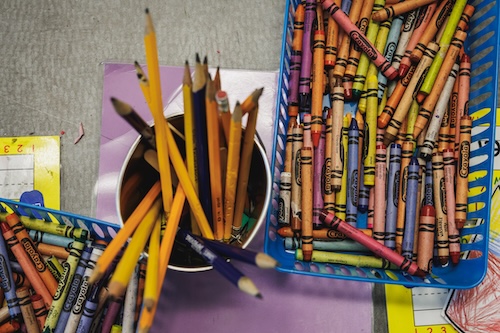
According to the latest NWEA data, students last spring were, on average, 4.1 months behind pre-pandemic achievement levels in reading and 4.5 months behind in math. Students in middle school grades, students attending high-poverty schools, and students of color were the furthest behind, especially in math. These are big gaps, and they represent a daunting challenge: How, exactly, are schools supposed to help students get back on track? Which academic interventions will work best?
Recent research out of NWEA explores what teachers can do to support students. Our collaboration with researchers outside of our organization has also helped us develop recommendations for policymakers. They are presented in our new brief with EdResearch for Action, a project of the Annenberg Institute at Brown University and Results for America.
The brief highlights research-based academic interventions and digs into research to highlight the most promising interventions policymakers can support for accelerating student learning in math and reading. We focus on three interventions with the strongest research base—tutoring, summer school, and double-doses of math instruction—before discussing ways schools can create the conditions for academic acceleration practices to succeed. What follows is a short summary of our findings.
1. Tutoring
High-impact tutoring is widely considered to be one of the most effective ways to help students quickly make up lost academic ground. A review of almost 200 rigorous studies found that high-impact tutoring—defined as tutoring delivered two to three times per week for at least 30 minutes per session with four or fewer students in a group—is one of the few school-based interventions with large positive effects on both math and reading achievement.
The research on tutoring suggests that effective programs tend to include the following design principles: tutoring is conducted during the school day as opposed to outside of school, students have three or more sessions per week, and tutoring is led by skilled tutors, conducted in small groups of up to four students, and is aligned to the classroom curriculum.
However, not all high-impact tutoring programs are effective. Challenges with staffing, scheduling, and student engagement can prevent school systems from implementing a tutoring program as designed, which can result in diminished effects. Optional on-demand tutoring programs may be popular because they require fewer district resources to implement, but they are unlikely to be used by the students who need them the most. Recent evidence on a California charter district found that, without nudges to participate, only 19% of middle and high school students ever accessed the district’s tutoring platform. Students most in need of support were even less likely to log on, raising concerns that opt-in resources may exacerbate gaps rather than reduce them.
2. Summer school
Schools and districts have also had success offering intensive, short-term interventions during summer vacations and other school breaks. Reviews of the effects of summer learning programs across multiple studies find positive impacts on student test scores in math. The impacts on reading are more mixed, with some studies showing no impact and others finding positive gains consistent with those in math.
Summer learning programs with the strongest gains tend to feature high levels of student attendance (i.e., at least 20 days) and highly effective teachers. Devoting more time to instruction was also associated with more noticeable gains in both math and reading.
Learning programs during school year breaks that are typically shorter in duration than summer school, often called “vacation” or “acceleration” academies, can also be effective strategies for boosting student achievement. For example, week-long acceleration academies targeted at students as part of turnaround efforts in Lawrence, Massachusetts, led to gains in math and reading. The programs provided small-group instruction (10–12 students per group) in either subject and were taught by a carefully selected group of talented teachers. In total, students received about 25 hours of extra instruction per week at a cost of $800 per student, which included incentives for students for perfect attendance.
3. Double-dose math
Double-dose math classes have been shown to be effective in helping students increase their math proficiency. Double-dose courses can be offered as an additional, separate class period in the school day or as an extended period. In either case, they typically replace an elective and serve all students or target a subset of students needing extra support.
The best evidence on the effects of double-dose math classes comes from a study out of Chicago. All ninth-grade students with low math test scores were enrolled in a double-dose algebra support class in addition to their regular algebra class, which was typically taught by the same teacher. Students participating in the double-dose period increased their spring algebra test scores significantly. In contrast, double-dose courses and interventions in English, reading, and vocabulary have not yielded test score gains beyond those of business as usual.
Other options
The brief also includes a discussion of the pros and cons of other potential academic interventions, including after-school programs, computer-assisted learning programs, and extending the school day or year. Each of these initiatives have promise, but the evidence is mixed and includes important cautions and caveats.
In general, academic interventions that address specific opportunity gaps and provide scaffolding for grade-level content lead to larger gains in student achievement compared to merely reteaching content from previous years. Interventions also tend to have larger positive effects when they attend to students’ social and emotional needs alongside academic learning. For example, tutoring programs with the largest impacts have consistent tutor–student matches over time, with one plausible factor being sustained tutor–student relationships focused on clear academic and social-emotional goals. Research also suggests that greater alignment between academic interventions and classroom instruction will amplify the efficacy of interventions.
Ultimately, many students still require sustained, targeted interventions to help them get back on track academically. Districts may have particular reasons for choosing one specific program over another, but our brief can help them identify which to pursue and what to consider to maximize the impact of their efforts.
Ayesha Hashim contributed to this post.







